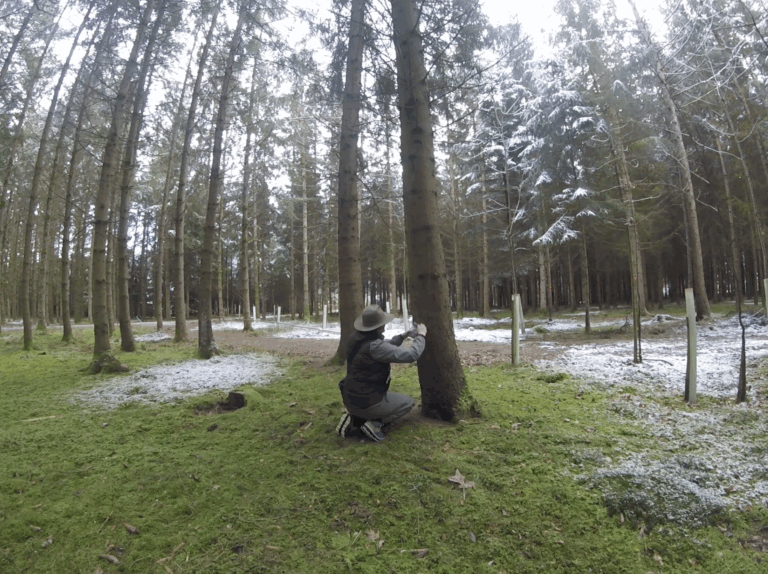Wood Kinship is a design ethnography investigating the intricate relationships and knowledge practices within the Black Forest ecosystem. The study provides a comprehensive look at the relationships within the Black Forest, drawing on vernacular knowledge as an example of ecological resilience. It engages with performative knowledge to examine how humans interact with non-human elements—families, trees, animals, and microbiomes—to create and sustain their shared environment. Fieldwork included local families, foresters, and hunters, emphasizing the importance of adapting traditional bioregional skills to tackle modern ecological challenges. The study advocates for a shift from individual to co-inhabitant knowledge, balancing human and ecological needs for mutual benefit. Through participatory observation and storytelling, it captures the rich tapestry of local design and craft practices. The research contrasts traditional methods with contemporary practices encapsulated in the concept of Smart Forests.
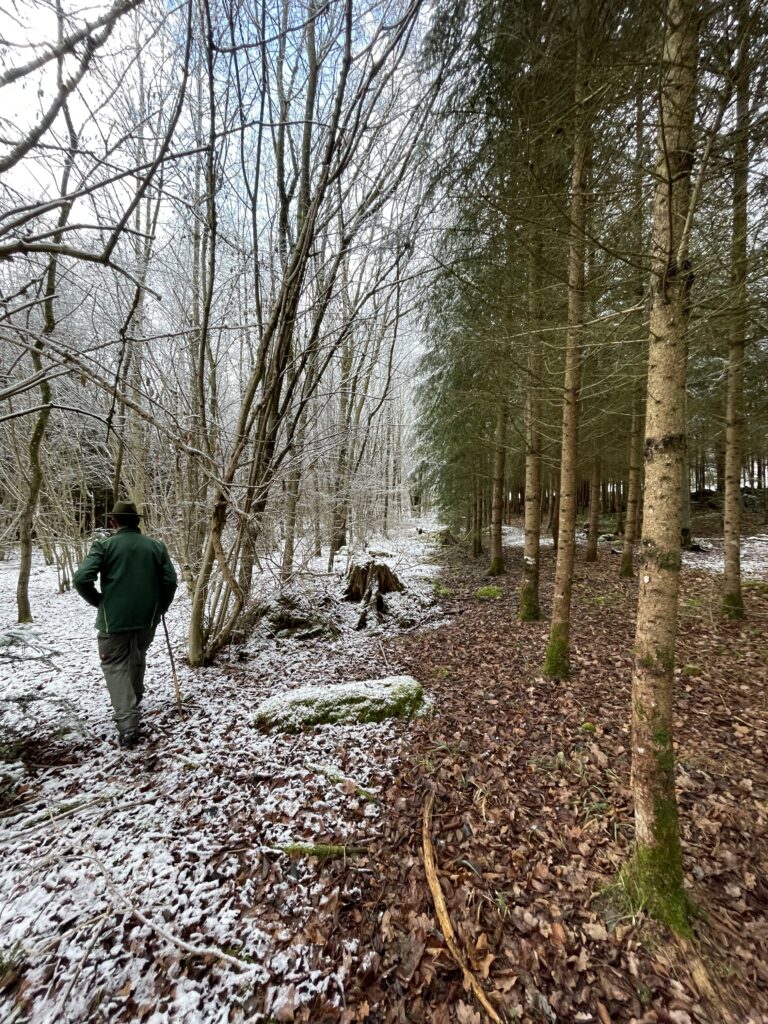
Walking with a private forest owner through a spruce monoculture (right) and a selfgrowing forest since a storm in 2010 (left). Black Forest, 2025.
This innovative approach combines advanced technology with forestry practices to enhance ecological management. Techniques include Terrestrial Scanning, which captures detailed landscape metrics using precision instruments, and LiDAR Scans, which use laser technology for mapping forest structures. Adopting a Design Ethnography approach, Wood Kinship merges traditional ethnographic research with a media assemblage that includes videography, 3D scans, and Smart Foresting techniques. These tools provide a holistic view of forest health and dynamics. Augmented Reality (AR) overlays enhance interaction with forest data, creating immersive experiences. Videos visualize dynamic forest processes over time, while 3D Scans produce detailed models of trees and landscapes. Sonic Plants employ sound to monitor plant health and detect environmental changes.
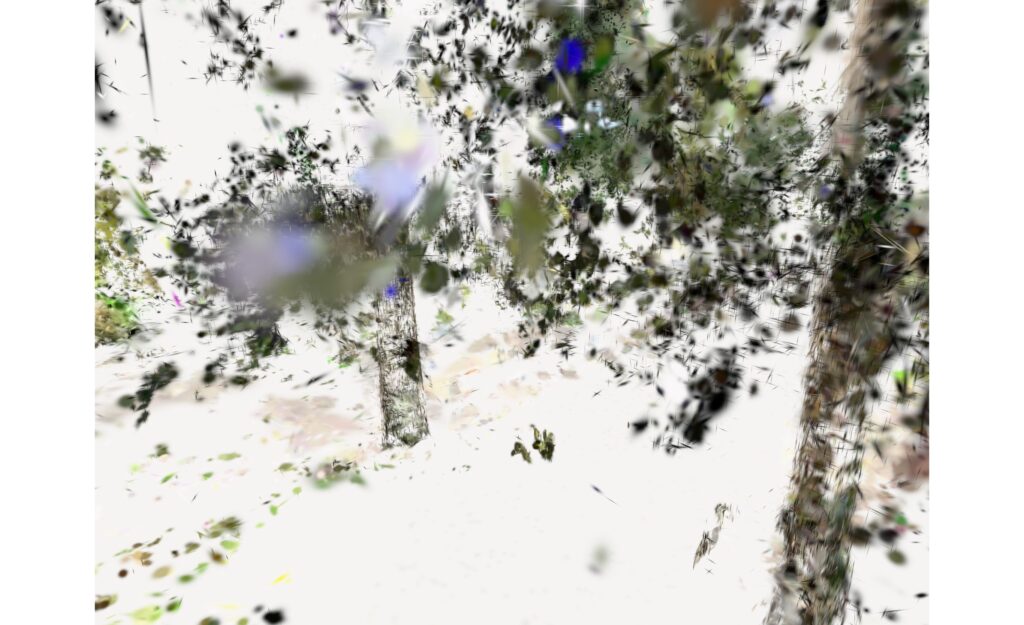
Plenterwald in Freudenstadt/Black Forest, LiDAR Scan 2025.
“Wood Kinship” centers on the traditional peasant forest practice called “Plenterwald” and examines the early signs of tree infestation through visible resin flow on spruce trees. As insects bore into the bark, the trees respond by producing sticky, water-repellent resin to seal the damage. Historically, humans have also harnessed spruce resin for various uses, including remedies and as a base for paints and varnishes. Although the traditional “Plenter” forest resembles a natural ecosystem, it is a human-crafted landscape. Locals in the Black Forest engaged in “plentering” without formal forestry training, demonstrating a deep connection and understanding of the natural world. This practice reveals opportunities for sustainable wood production while maintaining ecological balance, highlighting the necessity for effective forest management practices.
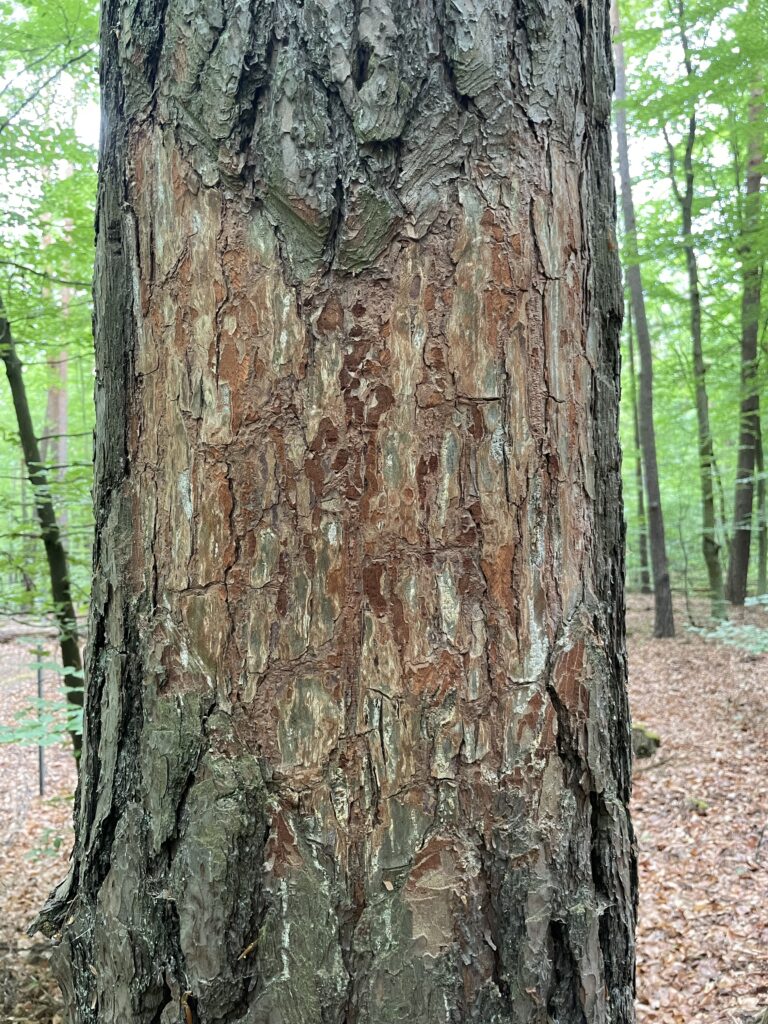
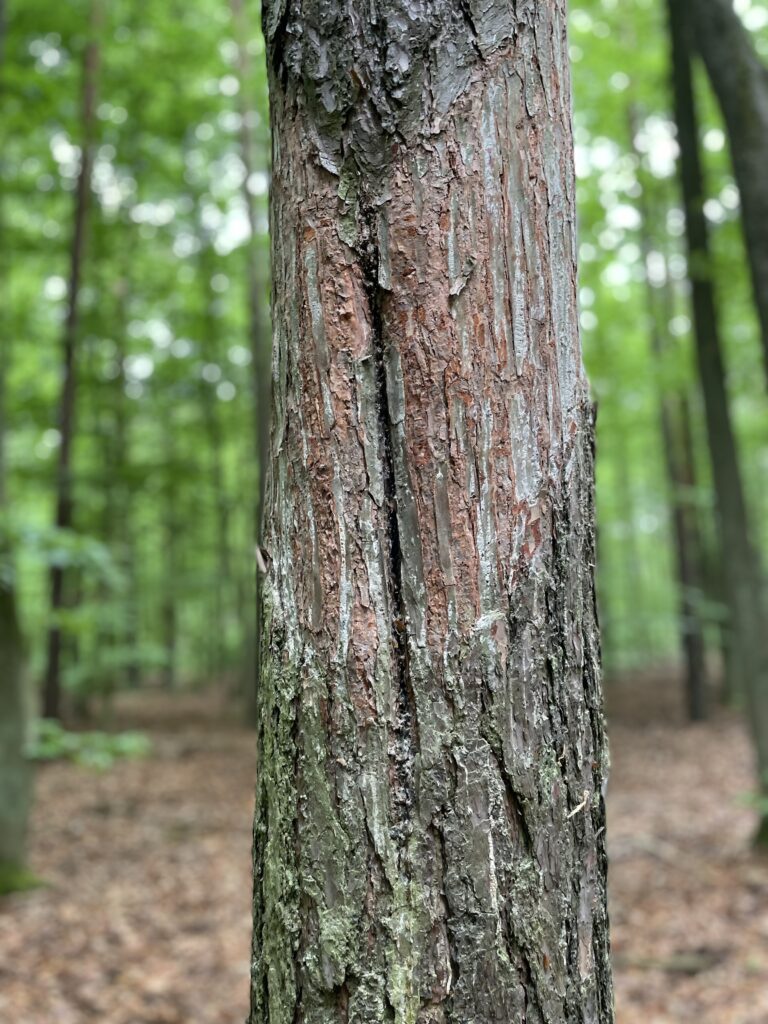
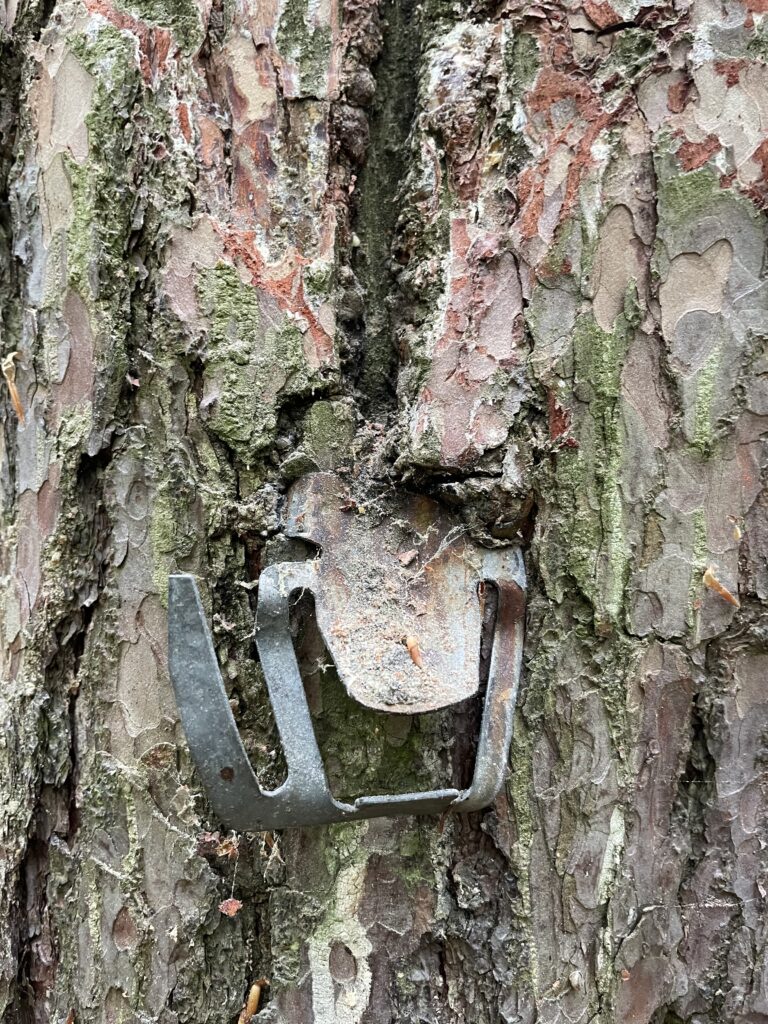
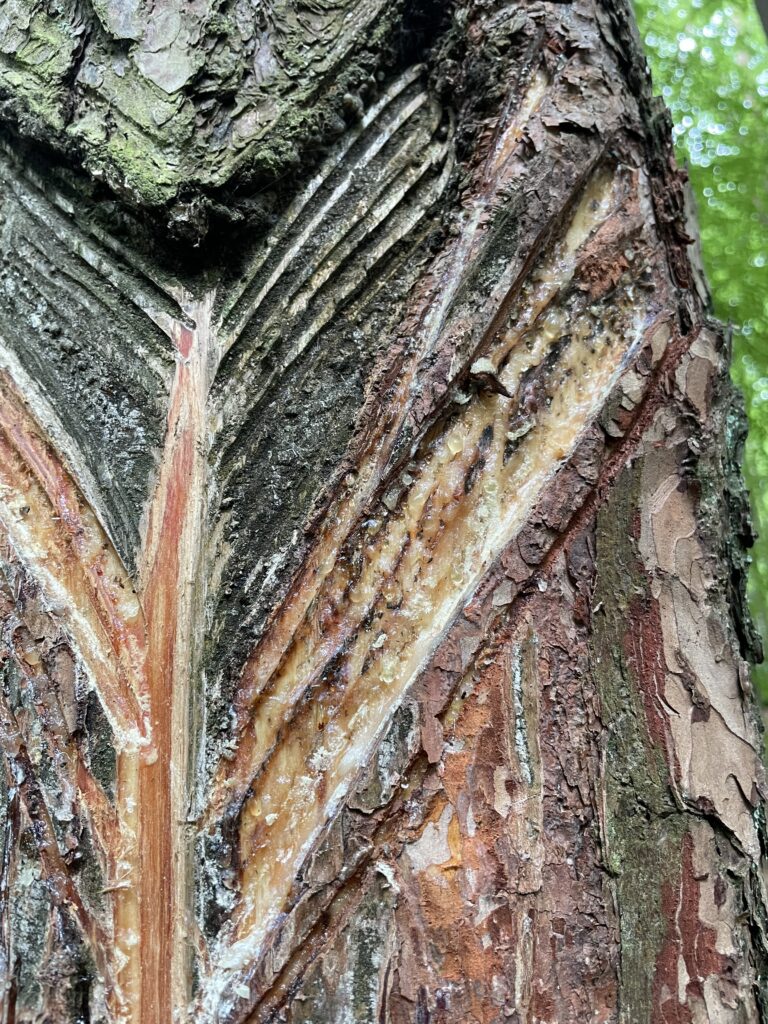
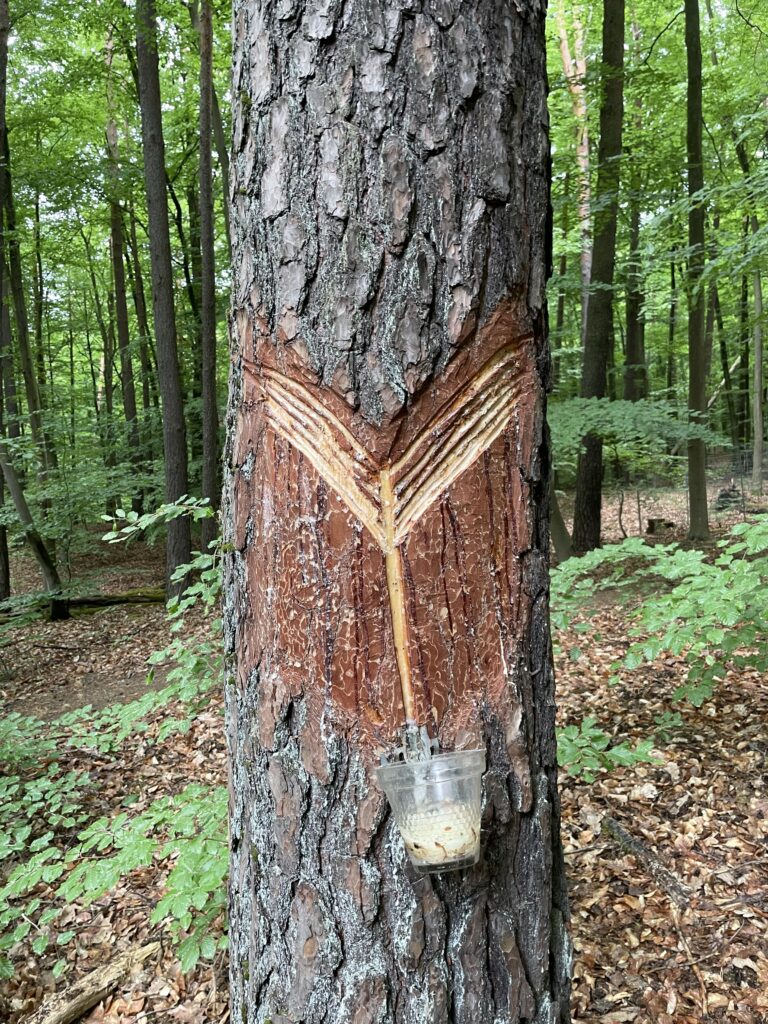
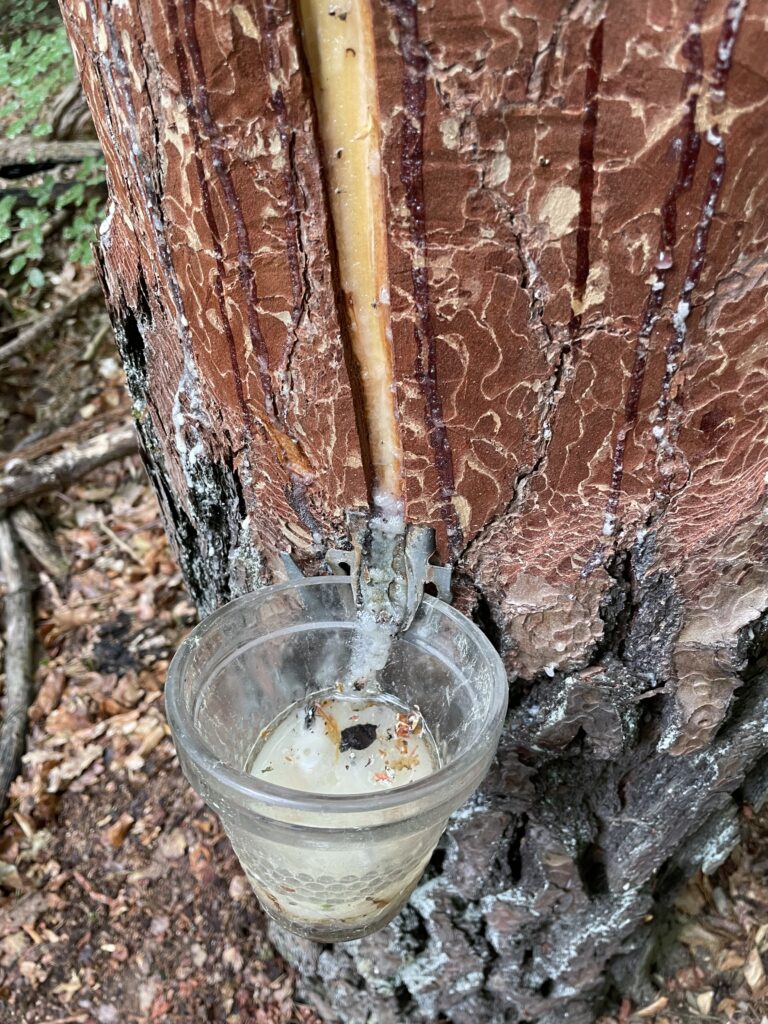
Resin Harvesting until 1991 in the GDR (here at the Harzungspfad Nordstolpe, Forstamt Berlin)
In the performative design research setup, a Material Assemblage was displayed at the Kunstgewerbemuseum Berlin during the “Symbiotic Wood” exhibition in 2025, accompanied by workshops and roundtable events.
The ongoing research and artistic practice aims to foster a deeper understanding of the interconnectedness between ecology and human practices, paving the way for sustainable future forestry.
Credits: The author acknowledges the support of the Cluster of Excellence »Matters of Activity. Image Space Material« funded by the Deutsche Forschungsgemeinschaft (DFG, German Research Foundation) under Germany’s Excellence Strategy – EXC 2025 – 390648296.

